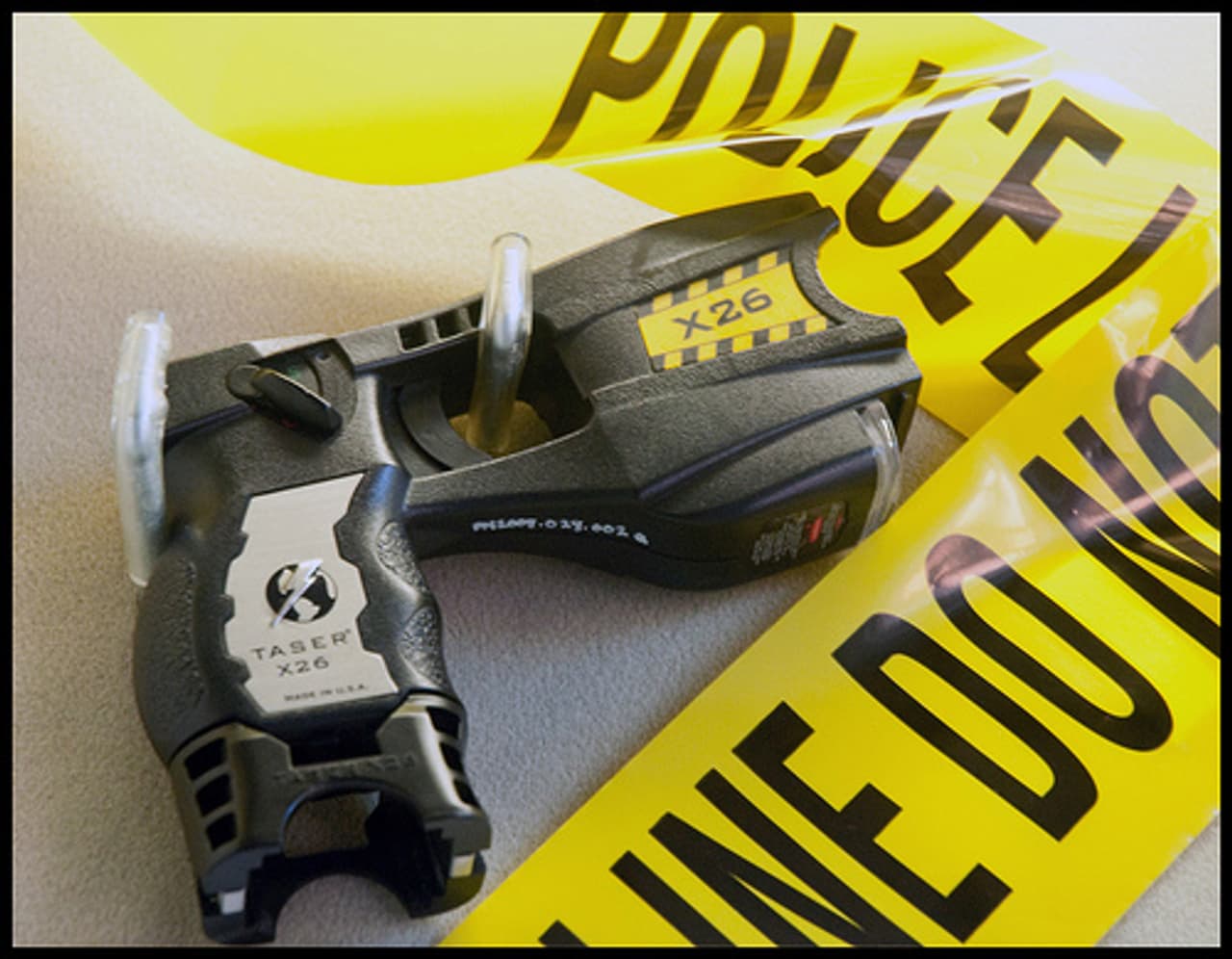
New research suggests Tasers can be lethal
Tasers. Not something that you’d like to come up against.
Questions about the safety of taser stun guns used by police forces across the globe have been raging ever since the supposedly non-lethal weapons first came into use over a decade ago.
Amnesty International, the company’s most vocal critic, has compiled figures indicating that at least 500 people in the USA have died since 2001 after being shocked with Tasers, and according to more conservative, but no less shocking, figures published by the US Justice Department, 184 people have died since 1986 after being stunned by a taser.
Taser International, the company that manufactures the 50,000 volt devices, has vehemently contested that the weapons are unsafe and has fought back in court when people say otherwise. Often the blame will fall back upon the victim’s drug abuse, weak heart or propensity to die suddenly from the debatable medical term known as ‘excited delirium’ – which Amnesty cites as a cause of death in 111 of 334 cases it has documented.
But there is a mounting tide of scientific proof that appears to question Taser’s claims. Since 2006 there have been a number of peer reviewed animal research studies demonstrating cardiac risk from the taser.
And earlier this month, Dr Douglas Zipes, one of the world’s most prominent cardiac electrophysiologists, published in the journal of the American Heart Association the first peer-reviewed human study demonstrating that darts in the chest can cause sudden death.
In an interview with ABC, Dr Zipes, of the Indiana University School of Medicine concluded: ‘It is absolutely unequivocal based on my understanding of how electricity works on the heart, based on good animal data and based on numerous clinical situations that the taser unquestionably can produce sudden cardiac arrest and death.’
Researchers analysed the records of eight people who went into cardiac arrest after being shocked with a taser, seven of whom died; concluding that the purportedly non-lethal weapon is anything but. They found that the electric shock through the body can cause irregular heartbeat and cardiac arrest, a condition in which the heart cannot properly contract.
Taser-related deaths
Leading US attorney John Burton who has represented the families of twenty taser-related death victims told the Bureau that, in light of the new research, the company needs to make its product safer and provide better training to those that use it.
‘Taser International released its products, the M26 and X26 electrical control devices without establishing their safety.
‘The Company needs to make the product safer and give its users better training and warnings. Agencies which persist in using this potentially lethal device need to make sure that officers understand the serious risks posed, and not continue to use tasers in trivial situations.
‘Following Dr Zipes’ report plaintiff’s lawyers now have powerful evidence to use in their cases. Unfortunately, Taser International remains in denial, and as a result there will no doubt be future victims.’
In the UK there have been three taser-related deaths since the stun-guns were first brought into widespread use in 2005. In one of the three, bodybuilder Dale Burns died after allegedly being shocked at least three times by officers from Cumbria Constabulary in August last year.
It is debatable whether the new research, which casts doubt over the safety of the taser, will filter across to these shores. A Channel Four investigation published in December, found that the frequency with which UK police officers are using their new kit is growing, highlighting that the number of taser discharges in the UK has risen collectively amongst forces by 70% from the previous year.
There have been a number of anecdotal reports of the weapons, which were first introduced as an alternative to fire-arms, being used in increasingly minor everyday policing incidents. Stun-guns were used to subdue protesters during the Dale Farm eviction process, and in February police wielded the weapons during a crown control situation on Oxford Street following the fatal stabbing of 18-year-old Seydou Diarrassouba. And just last week reports surfaced showing how 58-year-old Alzheimer’s sufferer Peter Russell was tasered three times by officers in his own home.
Multiple-tasering
Research by the Bureau also discovered that at least 158 people have been subjected to multiple-tasering – where repeated or prolonged electric shocks are used against an individual – since the weapons were rolled out across the UK, despite warnings about the dangers of the practice in the Home Office’s own taser safety guidance.
Consultant police psychologist and use of force expert Dr Mike Webster believes that the question marks surrounding the weapons thrown up by Dr Zipes’ research mean that international law enforcement agencies should put a moratorium on their use until the health and safety issues are properly and rigorously tested.
‘It’s no longer arguable that the wave form that the taser can produce does not cause cardiac electrical arrythmia and cardiac arrest,’ he said.
‘Previously it was all hypothesis and opinion by a number of very distinguished experts. What Dr Zipes has been able to do is prove this in an independent and rigorous study.’
He added: ‘We need to withdraw the weapons, get it independently tested and then decide what the health and safety effects are.
‘Dr Zipes has shown that police are putting a question mark around their belt whenever they put a taser in their holster.’
It remains to be seen what influence the study will have on public policy, and the seemingly exponential rise of the taser as a mainstay in the arsenal of everyday policing in both the USA and the UK. But one thing is for sure, Dr Zipes’ research has raised the most difficult questions to date for Taser International about the safety of its product.




